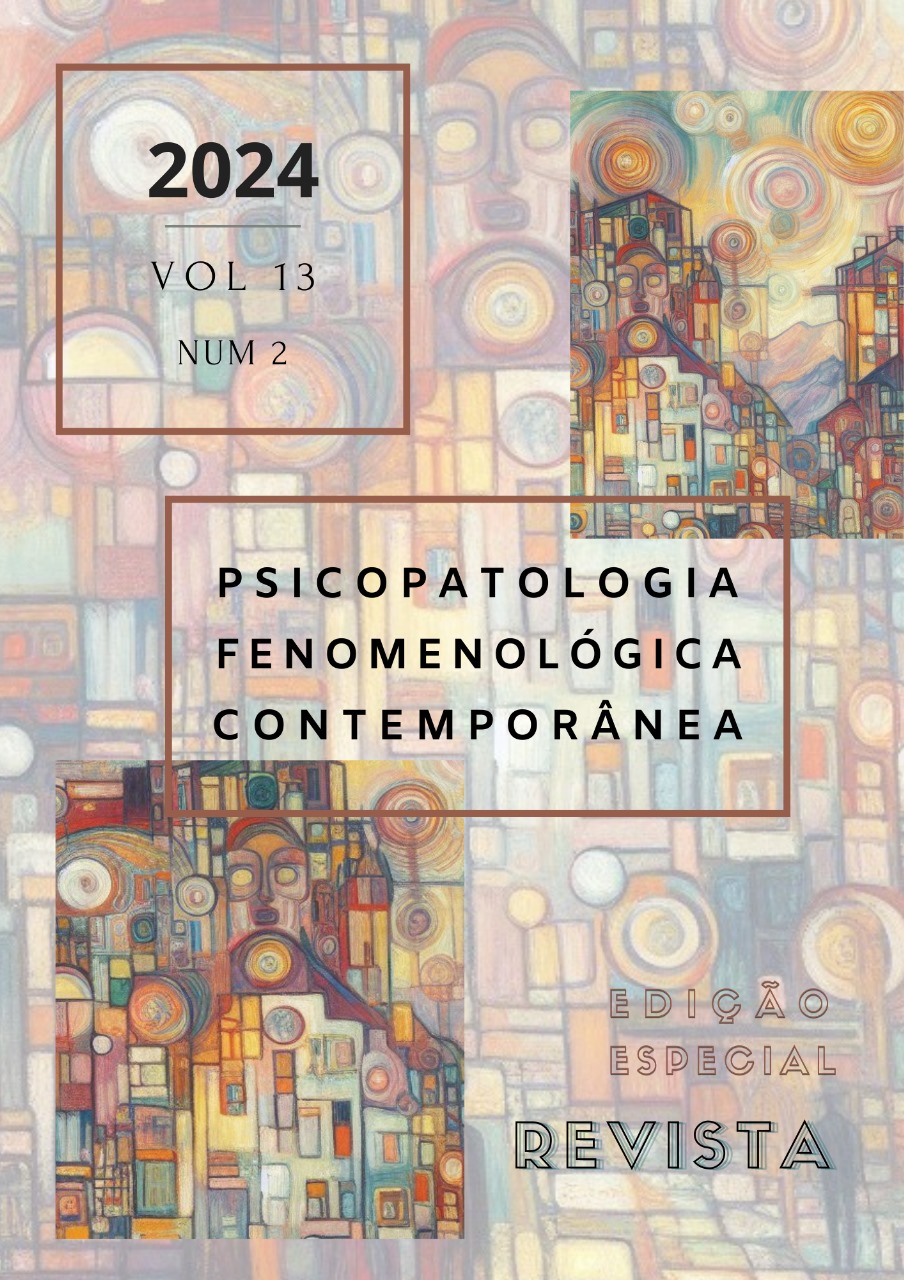Caráter sensitivo, tipo melancólico e extras sobre personalidade e transtornos mentais
DOI:
https://doi.org/10.37067/rpfc.v13i2.1179Resumo
Visão tradicional na psiquiatria diz respeito à relação íntima entre transtornos de personalidade e transtornos mentais primários, em modelo espectral. Funções psíquicas com raízes comuns poderiam exercer papel na personalidade e na psicose ou noutros transtornos, não apenas em termos de déficits, mas também de equilíbrio e proporções entre elas. Características da personalidade em conexão com as psicoses endógenas ou funcionais têm sido descritas, tais como os tipos sensitivo e melancólico. Conceitos originados na psicopatologia envolvendo psicoses e personalidade, nomeadamente esquizoidia e sintonia, parecem relacionados a fundamentos da cognição 4E. Quando se adota visão em contínuo dos transtornos mentais, eles se comportam em configuração unitária ou sistêmica, correspondendo a disposições endógeno-funcionais em interação com o meio e compondo a personalidade.
Downloads
Métricas
Referências
Ambrosini, A., Stanghellini, G., & Langer, A. (2011). El Typus melancholicus de Tellenbach en la actualidad: una revisión sobre la personalidad premórbida vulnerable a la melancolia. Actas Españolas de Psiquiatría, 39, 302-311.
Bleuler, E. (1922). Die Probleme der Schizoidie und der Syntonie. Zeitschrift für die gesamte Neurologie und Psychiatrie, 78, 373-399.
Daker, M. V. (1994). Die Kontinuität der Psychosen in den Werken Griesingers, Kahlbaums und Kraepelin und die Idee der Einheitspsychose [Doctoral Dissertation, Ruprecht-Karls-Universität Heidelberg]. Roderer Verlag.
Daker, M. V. (2019). The theory of symptom complexes, mind and madness. History of Psychiatry, 30, 227-239.
Daker, M. V. (2021). The Continuum of Mental Disorders and Unitary Psychosis: History and Perspectives. Cambridge Scholars Publishing.
Daker, M. V. (2023). Personality and mental disorders: sensitive character, melancholic type, and addenda. History of Psychiatry, 34, 369-382.
Fuchs T. (2018). Ecology of the Brain: The phenomenology and biology of the embodied mind. Oxford University Press.
Gallagher, S. (2023). Embodied and Enactive Approaches to Cognition. In K. Frankish (Ed.), Elements in the Philosophy of Mind (pp. 1-82). Cambridge University Press. https://doi.org/10.1017/9781009209793
Gebsattel., V. E. von (1983). Geleitwort. In H. Tellenbach, Melancholie: Problemgeschichte Endogenität Typologie Pathogenese Klinik (4th ed.). Springer-Verlag.
Griesinger, W. (1861). Die Pathologie und Therapie der psychischen Krankheiten (2nd ed.). Friedrich Wreden.
Guimarães-Fernandes F., Castellana G. B., & Ceron-Litvoc D. (2019). Dramaticity as essence: structural-phenomenological analysis of hysteria. Psicopatologia Fenomenológica Contemporânea, 8, 1-33.
Kraepelin, E. (1915). Psychiatrie. Ein Lehrbuch für Studierende und Aerzte (8th ed., Vol. 3). Johann Ambrosious Barth.
Kretschmer, E. (1918). Der sensitive Beziehungswahn: ein Beitrag zur Paranoiafrage und zur psychiatrischen Charakterlehre. Julius Springer.
Kretschmer, E. (1966). Der sensitive Beziehungswahn. Ein Beitrag zur Paranoiafrage und zur psychiatrischen Charakterlehre (4th ed., Ed. W. Kretschmer). Springer.
Krueger, R. F., & Tackett J. L. (2003). Personality and psychopathology: working toward the bigger picture. Journal of Personality Disorder, 17, 109-128. https://doi.org/10.1521/pedi.17.2.109.23986
Minkowski, E. (1968). Le temps vecú: Études phénoménologiques et psychopathologiques. Delachaux et Niestlé. (Original work published 1933)
Minkowski, E. (1970). Lived time: phenomenological and psychopathological studies (N. Metzel, Trans.). Northwestern University Press. (Original work published 1933)
Minkowski, E. (1980). La esquizofrenia: psicopatología de los esquizoides y de los esquizofrénicos (A. H. Rose, Trans.). Paidós.
Minkowski, E. (1997). Au-delà du rationalisme morbide. L’Harmattan.
Musalek, M. (2013). Health, Well-being and Beauty in Medicine. Topoi, 32, 171-177. https://doi.org/10.1007/s11245-013-9169-8
Rennert, H. (1982). Zum Modell “Universalgenese der Psychosen”: Aspekte einer unkonventionellen Auffassung der psychischen Krankheiten. Fortschritte der Neurologie-Psychiatrie, 50, 1-29.
Sass, L. (2017). Madness and Modernism: Insanity in the light of modern art, literature, and thought (revised edition). Oxford University Press.
Schmidt-Degenhard, M. (1988). Disposition und Vulnerabilität in der Problemgeschichte von Persönlichkeit und Psychose. In W. Janzarik (Ed.), Persönlichkeit und Psychose (pp. 47-56). Enke.
Tellenbach H. (1983). Melancholie: Problemgeschichte, Endogenität, Typologie, Pathogenese, Klinik (4th edn). Springer-Verlag.
Zachar P., & Krueger, R. F. (2013). Personality disorder and validity: A history of controversy. In K. W. M. Fulford, M. Davies, R. G. T. Gipps, G. Graham, J. Z. Sadler, G. Stanghellini, & T. Thornton (Eds.), The Oxford Handbook of Philosophy and Psychiatry (pp. 889-910). Oxford University Press.
Downloads
Publicado
Versões
- 2025-05-17 (2)
- 2024-11-12 (1)
Edição
Seção
Licença
Copyright (c) 2024 Maurício Viotti Daker

Este trabalho está licenciado sob uma licença Creative Commons Attribution-NonCommercial 4.0 International License.
Os autores detém os direitos autorais sem restrições, devendo informar a publicação inicial nesta revista, em caso de nova publicação de algum trabalho.









